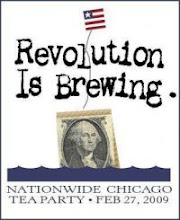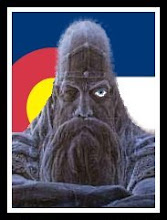Oklahoma Roads, Oklahoma Skies
 I have a friend who is a geophysical engineer. He specializes in the structure of roads... All kinds of roads: Railroads and rail beds; two lane country lanes to massive 16 lane wide superfreeways. He studies their structures, what works and what doesn't. It's not just the surface on which the rails or tires run. Its the substrate, how it interacts with the road bed and the road surface which carries the rolling stock loaded with raw materials, manufactured goods, the tools and equipment that makes it all happen...And the people who work, play, guard and interact with one another on these roads.
I have a friend who is a geophysical engineer. He specializes in the structure of roads... All kinds of roads: Railroads and rail beds; two lane country lanes to massive 16 lane wide superfreeways. He studies their structures, what works and what doesn't. It's not just the surface on which the rails or tires run. Its the substrate, how it interacts with the road bed and the road surface which carries the rolling stock loaded with raw materials, manufactured goods, the tools and equipment that makes it all happen...And the people who work, play, guard and interact with one another on these roads.My friend's company was approached by another geophysical engineering firm to run a survey of roadways in Oklahoma. They needed a driver. Stan, my friend, called me and I accepted the call.
- Road Trip One ~ Rain Soaked - 30 June 2010 to 13 July 2010:
 We picked up the rental truck, a new Dodge Ram 3500 diesel, extra cab camper special with a tow package. My first job was to pull out the jump seats to make room for electrical equipment.
We picked up the rental truck, a new Dodge Ram 3500 diesel, extra cab camper special with a tow package. My first job was to pull out the jump seats to make room for electrical equipment.Long story short; we installed direct power line to truck's battery, loaded in a portable mainframe for collecting and backing up the data collected from the the two GPR (Ground Penetrating Radar) antenna suspended from the back of the truck by a fiberglass square beam, locked to position with nylon nuts and bolts. We attached a survey wheel to measure velocity and distance traveled in conjunction with the data gathered.
Driving east to Salina, KS on I-70, we headed south on I-35 as rain clouds built all around us. It began raining in Stillwater, OK. We gathered in the equipment and settled into a motel. The next morning we began collecting data while the rain clouds collected moisture, building into afternoon rains.

We settled into a routine while staying in Oklahoma City. We collected data in the mornings until the rains came. Then we settled in and Stan processed and backed up the date onto disks. It took him long hours of babysitting an aging interface PC, as the truck mainframe could not and would not talk directly to the computer creating the back up disks.
It rained hard. Two evenings running, drainage and low lying roadways flooded in Oklahoma City. A teenager was swept away and drowned the first afternoon. It was hot and extremely humid. Walking out the hotel door at 8:00 A.M, shirt and pants immediately clung to my body, sticky and cloying.
For four days we traveled in and around OKC collecting data. Then we ran west on I-40 to the Texas border and back. Finally we made a long run south to Texas, collecting data on I-35 as it snaked its way through the rolling hills of the Arbuckle Wilderness.
 On the twelfth day we headed north back to Stillwater then to Wichita, KS. The next day we drove into Denver, rattled by the harsh suspension of the big Dodge. It was a good trip, just not very comfortable riding in a massive, tight and heavily suspended truck.
On the twelfth day we headed north back to Stillwater then to Wichita, KS. The next day we drove into Denver, rattled by the harsh suspension of the big Dodge. It was a good trip, just not very comfortable riding in a massive, tight and heavily suspended truck. The interstate roadways and byways in Oklahoma are populated with large numbers of OTR (Over The Road) truckers hauling all manner of goods and materials. In addition, there are large convoys of of oil field equipment trucks rolling across the plains on any given day. The continuous impact of all these massive trucks has a measurable effect on the road surface, the road beds and substrate structures and how well they hold up over the years. The data we collected will help the Oklahoma Department of Transportation determine what is the best course of action to take in order to provide safe and durable roads for years to come.
The interstate roadways and byways in Oklahoma are populated with large numbers of OTR (Over The Road) truckers hauling all manner of goods and materials. In addition, there are large convoys of of oil field equipment trucks rolling across the plains on any given day. The continuous impact of all these massive trucks has a measurable effect on the road surface, the road beds and substrate structures and how well they hold up over the years. The data we collected will help the Oklahoma Department of Transportation determine what is the best course of action to take in order to provide safe and durable roads for years to come.- Road Trip Two ~ Sun Baked and Broiled - 3 August 2010 to 13 August 2010:
Lesson learned, we rented a large Chevy Suburban for the second trip. Once again the GPR and survey wheel were suspended off the back end of the vehicle.
 Stan found a portable drive that made the transfer of data from the mainframe in to the truck to the back up computer a much faster operation. That in itself gave us more time to collect more data before we had to stop and spend long hours transferring and backing up data.
Stan found a portable drive that made the transfer of data from the mainframe in to the truck to the back up computer a much faster operation. That in itself gave us more time to collect more data before we had to stop and spend long hours transferring and backing up data.The weather was much drier with an attendant spike in the heat. Most days the temp ran between 100 and 107 with a minimum of 60% humidity, creating a heat index above 110 degrees. I truly appreciate well air conditioned vehicles and hotels.
Our first night in Oklahoma was spent in the little burg of Henryetta at the Green Country Inn; a throwback to the times before the mega-chain hotels had taken over the landscape with cookie-cutter facades all along the interstates. It was a clean and interesting place, owned by an ex-patriot British couple.
 From there we ran eastward on I-40 clear into Arkansas and back, collecting data. Our log sent us northeast to the rolling country around Tulsa, then once again back to Oklahoma City. From there we headed south by south-west towards Lawton on I-44. From Lawton we collected data all the way to the Texas border. We crossed the Red River and stopped long enough to give a wave to the Lone Star State.
From there we ran eastward on I-40 clear into Arkansas and back, collecting data. Our log sent us northeast to the rolling country around Tulsa, then once again back to Oklahoma City. From there we headed south by south-west towards Lawton on I-44. From Lawton we collected data all the way to the Texas border. We crossed the Red River and stopped long enough to give a wave to the Lone Star State. Another dead Armadillo, all four feet reaching for the sky, greeted our return into Oklahoma. The ubiquitous critters are found all across the state; along with racoon and possum. All are slow movers, mostly nocturnal, leaving little mounds of road kill throughout the state. Armadillos have a tendency to jump straight up when startled. This is a lethal habit when what startles them is a massive metal machine moving at freeway speeds.
Another dead Armadillo, all four feet reaching for the sky, greeted our return into Oklahoma. The ubiquitous critters are found all across the state; along with racoon and possum. All are slow movers, mostly nocturnal, leaving little mounds of road kill throughout the state. Armadillos have a tendency to jump straight up when startled. This is a lethal habit when what startles them is a massive metal machine moving at freeway speeds.And NO, we did not see any Armadillo carcasses with feet festooned with four Lone Star beer longnecks...dancing with the sky. It seems that this Post-Modern Age's need for speed has curtailed this once, well respected cultural statement.
 Western Oklahoma - long and flat stretches of roadway, cotton and cattle, corn and wheat, red dirt and brutal heat. Small towns still thrive along blue highways where the traditional mores of love of God and Country flourish. It really is beautiful on these high plains. Some would call it harsh and monotonous. Not so. There are uplifts and cuts here and there, like the Wichita National Wildlife Refuge in the Wichita Hills north of Lawton, where the long flat vistas are broken.
Western Oklahoma - long and flat stretches of roadway, cotton and cattle, corn and wheat, red dirt and brutal heat. Small towns still thrive along blue highways where the traditional mores of love of God and Country flourish. It really is beautiful on these high plains. Some would call it harsh and monotonous. Not so. There are uplifts and cuts here and there, like the Wichita National Wildlife Refuge in the Wichita Hills north of Lawton, where the long flat vistas are broken. In the little burg of Bessie, I spotted this quintessential prairie icon, the concrete grain elevator standing proud and stark against the deep blue sky.
In the little burg of Bessie, I spotted this quintessential prairie icon, the concrete grain elevator standing proud and stark against the deep blue sky.We collected our last data outside of Kingfisher, OK. We did a quick breakdown of the equipment in 105 degree heat and stopped at local diner for lunch. A sturdy doe eyed, clear skinned young gal, probably of English/German heritage served us lunch and asked about our work. Gentle and genuine, there was no pretense or prejudice in her attitude to a couple of rangy looking characters from out of town. It was refreshing, a throwback to an earlier, simpler time in America. Refreshed, we headed for Wichita to spend the night. The next morning we repacked the equipment and made our way up to Salina, KS, then west back to Denver and cool dry nights where their is no need for the constant drone of the air conditioner to keep sleep tolerable.



